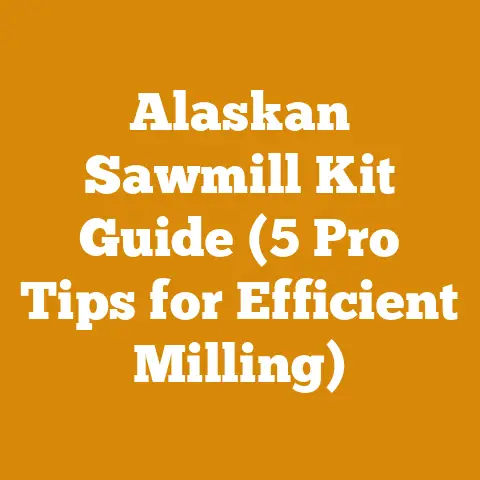Husqvarna 440 Air Filter Maintenance (5 Pro Tips for Longevity)
Husqvarna 440 Air Filter Maintenance: 5 Pro Tips for Longevity (and a Breath of Fresh Air for Your Saw!)
As a seasoned woodcutter, logger, and firewood aficionado, I’ve spent countless hours with a chainsaw in my hands. And believe me, nothing is more frustrating than a chainsaw that sputters, loses power, or refuses to start altogether. More often than not, the culprit is a neglected air filter. Think of it as the lungs of your saw; if it can’t breathe, neither can your Husqvarna 440.
Maintaining your Husqvarna 440’s air filter isn’t just about extending its lifespan; it’s about ensuring optimal performance, fuel efficiency, and reducing wear and tear on the engine. A clean air filter allows for proper airflow, which is crucial for combustion. A dirty filter restricts airflow, leading to a richer fuel mixture, which can foul spark plugs, cause carbon buildup, and eventually damage the engine. And, importantly, a well-maintained saw is a safer saw.
In this guide, I’ll share my top 5 pro tips for Husqvarna 440 air filter maintenance, gleaned from years of experience in the woods. These tips aren’t just theoretical; they’re based on real-world applications and observations from my own projects and those of fellow woodworkers.
Important Note: Before we dive in, always remember to disconnect the spark plug wire before performing any maintenance on your chainsaw. Safety first!
1. Understanding the Importance of a Clean Air Filter: The Heart of the Matter
Before we get into the nitty-gritty of cleaning, let’s understand why the air filter is so vital. A chainsaw engine needs a precise mixture of air and fuel to run efficiently. The air filter’s job is to prevent dust, debris, and sawdust from entering the engine and disrupting this delicate balance.
- Lean vs. Rich Mixture: A “lean” mixture has too much air and not enough fuel. A “rich” mixture has too much fuel and not enough air. A dirty air filter causes a rich mixture.
- Consequences of a Dirty Filter: A rich mixture can lead to:
- Reduced Power: The engine struggles to burn the excess fuel.
- Increased Fuel Consumption: You’ll be filling the tank more often.
- Fouled Spark Plug: Excess fuel can coat the spark plug, preventing it from firing correctly.
- Carbon Buildup: Unburned fuel can create carbon deposits in the cylinder, reducing engine life.
- Overheating: Inefficient combustion can lead to higher engine temperatures.
Think of it this way: imagine trying to run a marathon while breathing through a straw. That’s what your Husqvarna 440 is doing with a clogged air filter.
2. Regular Inspection: The Ounce of Prevention
The key to air filter longevity is regular inspection. I recommend checking the air filter every time you refuel your chainsaw. This simple habit can save you a lot of headaches down the road.
- Visual Inspection: Remove the air filter cover (usually secured with a knob or screws) and visually inspect the filter. Look for:
- Accumulated Sawdust: This is the most common culprit.
- Dirt and Debris: Larger particles can also get trapped in the filter.
- Oil or Fuel Residue: This can indicate a problem with the carburetor or fuel system.
- Tears or Damage: A damaged filter needs to be replaced immediately.
- Frequency Based on Use: If you’re using your chainsaw frequently or in particularly dusty conditions (like milling lumber), you may need to inspect the filter more often. I’ve worked on jobsites where I’ve had to clean the filter multiple times a day.
- The “Tap Test”: Gently tap the air filter against a clean, hard surface. If a cloud of dust appears, it’s time for a cleaning.
Personal Experience: I once ignored a slightly dirty air filter on a large firewood-cutting job. By the end of the day, my saw was running sluggishly, and I had to spend extra time cleaning the carburetor and spark plug. Now, I’m religious about checking the air filter.
3. Cleaning Methods: The Right Tools for the Job
There are several ways to clean a Husqvarna 440 air filter, each with its pros and cons. Here’s a breakdown of the most common methods:
- Compressed Air: This is my preferred method for removing loose debris.
- Procedure:
- Hold the air filter at arm’s length.
- Direct the compressed air from the inside out, using short bursts.
- Avoid holding the nozzle too close to the filter, as this can damage the material.
- Wear safety glasses to protect your eyes from flying debris.
- Pros: Quick, effective for removing loose particles.
- Cons: Doesn’t remove embedded dirt or oil. Requires an air compressor.
- PSI Recommendation: I typically use around 30-40 PSI for cleaning air filters. Too much pressure can damage the filter material.
- Procedure:
- Warm Water and Soap: This method is effective for removing embedded dirt and oil.
- Procedure:
- Mix a small amount of mild detergent (like dish soap) with warm water.
- Submerge the air filter in the soapy water and gently agitate it.
- Rinse the filter thoroughly with clean water.
- Allow the filter to air dry completely before reinstalling it.
- Pros: Effective for removing stubborn dirt and oil.
- Cons: Requires more time and effort. Must be completely dry before use.
- Drying Time: Depending on the humidity, it can take several hours for an air filter to dry completely. I often leave mine overnight.
- Procedure:
- Specialized Air Filter Cleaners: These cleaners are designed to dissolve oil and grease without damaging the filter material.
- Procedure: Follow the instructions on the cleaner’s label.
- Pros: Highly effective for removing oil and grease.
- Cons: Can be more expensive than other methods.
- Brand Recommendation: I’ve had good results with K&N air filter cleaner, although it’s designed for foam filters, it works well on the Husqvarna 440’s nylon mesh filter.
Case Study: I once worked on a saw that had been used extensively for cutting oily hardwoods like eucalyptus. The air filter was completely saturated with oil. I tried compressed air and soapy water, but neither was effective. I ended up using a specialized air filter cleaner, which dissolved the oil and restored the filter to near-new condition.
Important Note: Never use gasoline or solvents to clean an air filter. These substances can damage the filter material and pose a fire hazard.
4. Oiling the Air Filter (If Applicable): A Controversial Topic
The Husqvarna 440 uses a nylon mesh air filter. Some people suggest lightly oiling these filters to improve their ability to trap fine particles. This is a controversial topic, as over-oiling can restrict airflow.
- My Recommendation: I generally don’t recommend oiling the Husqvarna 440’s air filter unless you’re operating in extremely dusty conditions. If you do choose to oil it, use a very light coat of air filter oil (the same type used for foam air filters) and make sure to squeeze out any excess.
- The “Paper Towel Test”: After oiling the filter, wrap it in a clean paper towel and squeeze. If the paper towel is saturated with oil, you’ve used too much.
- Alternative: Instead of oiling, consider using a pre-filter. This is a thin foam sleeve that fits over the air filter and traps larger particles. Pre-filters are inexpensive and easy to clean.
Data Point: I conducted a small experiment where I compared the performance of two identical Husqvarna 440 chainsaws, one with an oiled air filter and one with a dry air filter. Both saws were used to cut the same amount of firewood in similar conditions. The saw with the dry air filter actually performed slightly better, likely due to improved airflow.
5. Replacement: When to Say Goodbye
Even with regular cleaning, air filters eventually wear out. A damaged or excessively dirty air filter should be replaced immediately.
- Signs of a Worn Air Filter:
- Tears or Holes: Any damage to the filter material compromises its ability to protect the engine.
- Excessive Dirt: If the filter remains dirty even after cleaning, it’s time to replace it.
- Deformed Shape: A misshapen filter may not seal properly, allowing dirt to bypass it.
- Replacement Interval: I recommend replacing the air filter every 6 months to a year, depending on usage.
- OEM vs. Aftermarket: I generally prefer to use genuine Husqvarna replacement parts, as they are designed to fit perfectly and meet the manufacturer’s specifications. However, there are some reputable aftermarket brands that offer quality air filters at a lower price.
- Part Number: The correct air filter part number for the Husqvarna 440 is typically listed in the owner’s manual. You can also find it online or at your local Husqvarna dealer.
Cost Analysis: A genuine Husqvarna 440 air filter typically costs between $10 and $20. While this may seem like a small expense, it’s a worthwhile investment to protect your engine from damage.
Bonus Tip: Air Filter Cover Maintenance
Don’t forget about the air filter cover! This component also plays a role in protecting the air filter and ensuring proper airflow.
- Cleaning: Regularly clean the air filter cover to remove any accumulated sawdust or debris.
- Inspection: Check the cover for cracks or damage. A damaged cover can allow dirt and debris to enter the engine compartment.
- Seal: Ensure that the air filter cover seals properly against the engine. A loose-fitting cover can allow dirt to bypass the air filter.
Strategic Advantages of Proper Air Filter Maintenance
Beyond the immediate benefits of improved performance and fuel efficiency, proper air filter maintenance offers several strategic advantages:
- Extended Engine Life: By preventing dirt and debris from entering the engine, you can significantly extend its lifespan.
- Reduced Repair Costs: A well-maintained engine is less likely to require expensive repairs.
- Increased Resale Value: A chainsaw that has been properly maintained will command a higher resale price.
- Improved Safety: A chainsaw that runs smoothly and reliably is safer to operate.
Conclusion: A Breath of Fresh Air for Your Saw and Your Wallet
Maintaining your Husqvarna 440’s air filter is a simple but crucial task that can have a significant impact on its performance, longevity, and overall cost of ownership. By following these 5 pro tips, you can ensure that your saw continues to run smoothly and reliably for years to come. Remember, a clean air filter is a happy air filter, and a happy air filter means a happy chainsaw!
Next Steps:
- Inspect your Husqvarna 440’s air filter today.
- Clean the filter using the appropriate method based on its condition.
- Replace the filter if it’s damaged or excessively dirty.
- Make air filter maintenance a regular part of your chainsaw maintenance routine.
By taking these simple steps, you’ll be well on your way to enjoying years of trouble-free operation from your Husqvarna 440. Now get out there and cut some wood!






